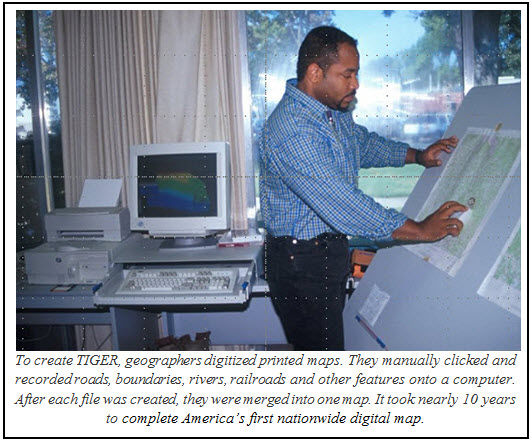Written by: John H. Thompson
At the U.S. Census Bureau, we’re researching ways to use technology to transform the way we do business. Not only will this transformation keep our censuses and surveys quick, easy, and secure, it will reverse the decades-long trend of increasingly more expensive operations.
Over the past four years, we’ve researched cost-saving innovations. We’ve come up with an exciting blueprint of what is possible in a census when we entirely rethink our operations and leverage technology. The President’s FY 2016 budget, released yesterday, funds the design of these systems and the testing of those together with new operations.
While 2020 might seem like a long way off, it is coming quickly: we must design operations, test systems and bring them together to “lock down” the final plan by 2018 to be ready by 2020. Our proposals for transforming the census through technological innovation include:
• Reengineering address canvassing: Prior to every Census, we compile a list of every housing unit in America. Developing a high-quality address list is crucial to the success of the census. By using address updates from the U.S. Postal Service and local governments – combined with imagery and private sector sources – we can drastically cut the cost of editing this list.
• Maximizing self-response: Our experience with the American Community Survey and the 2012 Economic Census demonstrate the promise of the Internet for maximizing self-responses to surveys. By allowing respondents to easily answer the questionnaire online, we can save millions on the costs of mailing out, getting back, scanning and hand-keying the information from paper forms into our system. At the same time, we need to authenticate online responses to ensure that they are genuine and not duplicative.
• Using administrative records: Another way that we can make our operations more efficient is by using records from other federal agencies to improve our counts of people and places.
• Reengineering field operations: In 2010, much of the on-the-ground work by Census Bureau field representatives was done on paper. By adopting technology to automate work, we can make field operations more efficient and reduce our paperwork burden.
As you can imagine, designing systems of this scale takes time, and we only have one chance to “get it right.” That’s why we began planning for 2020 even before the 2010 Census, and why these next few years of testing, development and implementation are so important. We need to design, develop, and build our data collection and processing systems; test them individually for function; and then test them together to ensure that they function in a real-world setting.
Of course, the Census Bureau’s work includes much more than the decennial census, and our proposals for innovation reflect that. In other areas of our agency, we’re focusing on:
• Census Enterprise Data Collection and Processing: With millions of people responding to our many surveys and censuses each year, the Census Bureau does an enormous amount of data collection and processing. In the past, we created unique data collection and processing systems for every survey. Now, we’ll integrate and standardize those systems across the organization. This will save money and time, and help us to manage our operations in the most efficient way possible.
• Administrative records clearinghouse: Part of the mission of the federal statistical system (which includes the Census Bureau) is to “provide quality, unbiased data to support reasoned, disciplined decisions.” This clearinghouse will include administrative data from federal and federally-sponsored programs, making them easier to use. Researchers, program administrators and policy makers can access and evaluate the program records easily and use them to provide new insights and evidence for sound decision-making.
• Geographic support: The Geographic Support Systems Initiative enable us to make ongoing updates to our address lists and maps, and supports our efforts to reengineer the address canvassing operation for the 2020 Census by continually updating the Census Bureau’s address list throughout the decade. It increases the amount of addresses provided by state and local partners that we can add to our address list, and prepares us to use updates from commercial data and other sources. Crucially, the initiative provides updates for rural addresses, addresses in Puerto Rico, and group quarters.
• American Community Survey: The American Community Survey releases over 11 billion estimates each year, and is used to distribute more than $400 billion of federal dollars each year. We will research how we can reduce respondents’ burden, while keeping data quality high.
• Economic Census and Census of Governments: We need to streamline our processes in order to support 100% electronic responses to these censuses to increase their cost-effectiveness. We will also introduce new data products for maximum data quality and usefulness.
The 2020 Census will be unlike any other in census history. The next few years are critical to this effort. I encourage anyone who is interested in this process to follow along as we research, test and plan. You can watch our meetings online and participate through a civic dialogue. The census – which is an enumeration of the entire nation – will only succeed with the participation of the nation.
For an overview of the Census Bureau’s FY 2016 budget, you can view this infographic.























